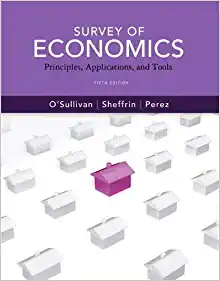Question
Question 1: Consider a two-period two-country endowment economy. Households have preferences described by the utility function ln C U 1 + ln C U 2
Question 1: Consider a two-period two-country endowment economy. Households have preferences described by the utility function ln CU1 + ln CU2 where CU1 and CU2 denote the consumption in period 1 and period 2. Suppose that households receive exogenous endowments of goods given by QU1 =10, QU2 = 15 in periods 1 and 2, respectively. Europeans have identical preferences, given by ln CE1 + ln CE2 where CE1 and CE2 denote the consumption in period 1 and period 2. Suppose that households receive exogenous endowments of goods given by QE1 =10, QE2 = 15 in periods 1 and 2, respectively. Assume further that the endowments are nonstorable, that the U.S. and Europe are of equal size, and that there is free capital mobility between the two economies. The United States starts period 1 with a zero net foreign asset position.
1.Compute the equilibrium levels of world interest rate, consumption, the trade balance, and the current account in periods 1 and 2 in the U.S.
2.Suppose that a contraction originates in the United States. The U.S. endowment falls from 10 to 8 in the first period and is expected to continue to fall to 6 in the second period. The endowments in Europe remain unchanged each period. Calculate again the equilibrium interest rate and current accounts in the U.S. and Europe in period 1.
3.Now instead suppose that the Europe experience a favorable shock that temporarily increases the Europe endowment from 10 to 15 in the first period. The second period is still 15. There is no change in the U.S. endowment (QU1 =10, QU2 = 15). Calculate again the equilibrium interest rate and the two current accounts in period 1.
4.Show on a current account-world interest rate plot qualitatively how a domestic shock can increase the current deficit for the U.S. How a external shock can increase the current account deficit for the U.S.. Point out the difference in the equilibrium world interest rates.
Step by Step Solution
There are 3 Steps involved in it
Step: 1

Get Instant Access to Expert-Tailored Solutions
See step-by-step solutions with expert insights and AI powered tools for academic success
Step: 2

Step: 3

Ace Your Homework with AI
Get the answers you need in no time with our AI-driven, step-by-step assistance
Get Started


